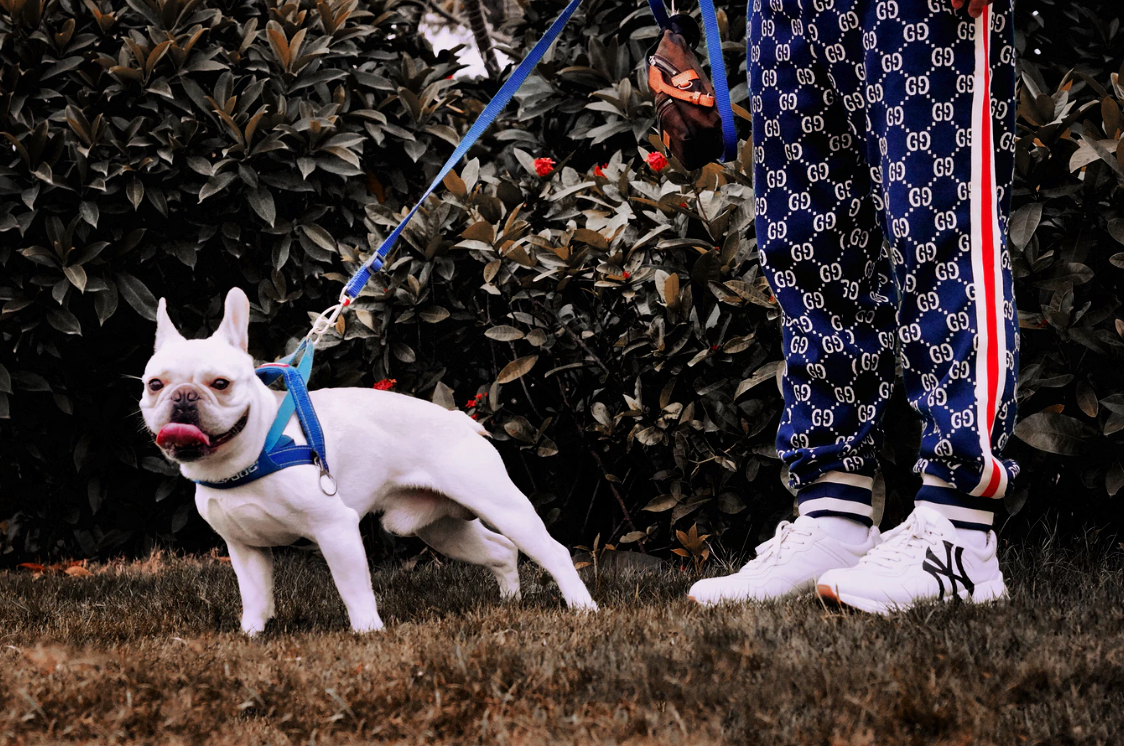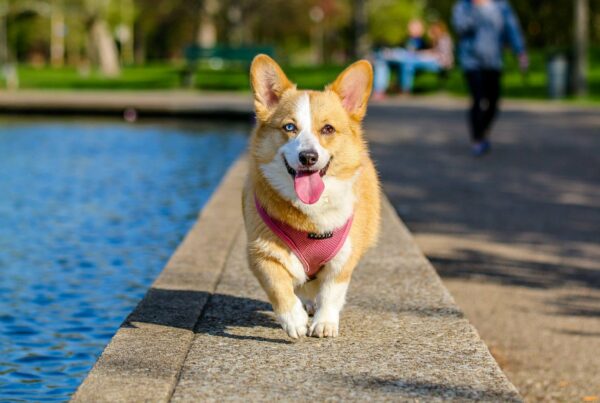If your pup is a puller in the sense that he pulls the leash while walking, the chances are that your walks aren’t too enjoyable. But, this doesn’t mean that you should give up. On the contrary, you need to stay motivated as only regular leash training can teach your pup to walk elegantly.
Unfortunately, depending on the dog, his leash training might take much longer than expected. The good news is that there is a way to shorten it. The thing you need is a harness, which is a much more suitable option than a dog collar.
The reasons are numerous, starting with the fact that it’s more comfortable for him. When a collar is used, it puts the pressure on his neck and throat, but if you decide on using a harness, the weight will be distributed over his chest, which won’t cause him any pain. Another reason why harness beats collar is that it’s a more secure option.
But, all of this still doesn’t mean that by buying a harness you will miraculously turn your dog into an elegant walker. You still need to harness train him, but the good news is that there are several pretty awesome ways that can help you do it quicker. Here are some of those!
1. Pick the Right Kind of Harness
Which harness is the right choice for your dog is something that depends on the size and strength of your pup, as well as on his habit of pulling the leash. If he sometimes loses his focus during the walk and starts pulling, even a regular back-clip harness would do the job.
But, if your pup has a habit of pulling the leash constantly during the walks, our advice is to buy the one that has a clip on the front. The reason is that the center of gravity in dogs is upfront, meaning that this kind of harness will make him spin around on the spot if he tries to push forward.
And if your dog is really extreme when it comes to pulling the leash, the best thing you can get is the so-called Dual D ring no pull dog harness. This is a type of harness that has clips both on the front and on the back, ensuring the dog won’t pull, but also adding to the security.
2. Pick the Right Size of the Harness
Okay, this may sound obvious, but we still need to mention it. Picking the right size of the harness is of extreme importance because it can have a direct influence on how your pup walks. If it’s tight and uncomfortable for him, he’ll try to walk fast in order to get over with the walk as soon as possible. On the other hand, if the harness is too loose, it can make it awkward for him to walk properly.
3. Harness-Train Him at Home
Dogs are curious creatures and your pup probably gets distracted pretty easily. This is why a great tip is to harness-train him in the environment he’s completely familiar with. Rather than taking him straight to a park, where he could get distracted by other dogs, our advice is to first do it at home.
Once he’s learned how to do it properly at home, it’s time to take him outside. Start with a park that’s not too crowdy before talking him somewhere where there’s a lot of people.
4. Take Him on Walks in the Afternoon
Dogs are crepuscular animals, meaning that they get the most active right before the dawn. What this means is that if you take him for a walk early in the morning, he’s probably gonna be full of energy and pull the leash more than usual.
Going for a walk in the afternoon is a much better option. He won’t feel as energetic as he would be early in the morning. At the same time, an afternoon walk is going to make him tired and ready for sleep.
5. Have Treats Ready
How your dog’s mind works is that when he gets a treat, he’ll try to repeat the same action that led to him receiving the treat. So, if he returns to your leg on your command, you need to reward him with a treat. By doing this every time he obeys your commands, you will teach him what kind of walking style is desirable.
6. Be Ready to Raise Your Voice
The positive motivation isn’t the only kind of motivation that will work on your dog. Negative motivation will work as well. Of course, we’re not saying that you should hit him. What we’re saying is that you should raise your voice at him, thus making it clear to him that he’s been behaving badly.
So, each time he starts pulling or changing the direction, it’s time to raise your voice. Over time, he’s probably going to figure out what are the things that make you yell at him. And once he does figure it out, he’s gonna stop doing those things.
7. Never Give Up
Same as any other type of dog training, harness training also takes a lot of time. You can’t expect your pup to master these skills straight away. The obvious question is how long is it going to take? Well, it depends on many factors, starting with the level of training he’s had so far.
It also depends on the age of your pup. They say that you can’t teach an old dog new tricks. It’s not true when harness training is in question, but it does take a bit longer than it would with younger puppies. Finally, it also depends on his breed. Some dog breeds are just easier to train than others.
One thing is certain, though. Your pup is going to learn how to walk properly with a harness. And that’s why you should not give up on him!




